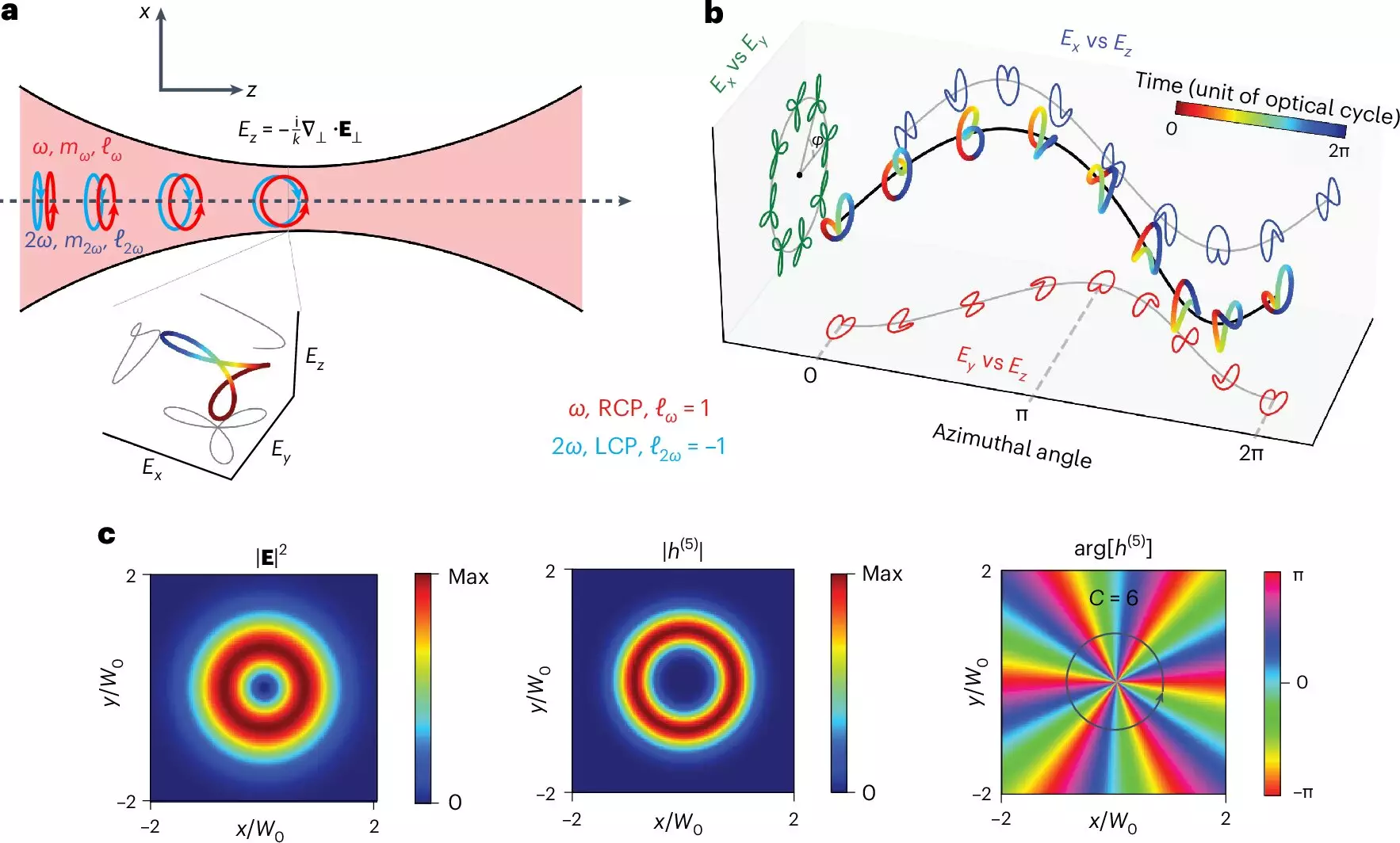Chirality is a phenomenon that lies at the intersection of chemistry, biology, and pharmacology, where molecular structures exhibit asymmetry similar to left- and right-handedness. This characteristic is crucial for understanding how molecules interact within biological systems, particularly in the development of pharmaceuticals. The distinction between chiral molecules—the right-handed (dextrorotatory) and the left-handed (levorotatory)—can have significant implications for safety and efficacy in medications. The history of thalidomide serves as a poignant reminder of this seriousness, wherein the racemic formulation led to devastating consequences when its harmful isomer caused birth defects.
Recent advancements in scientific methods promise to enhance the accuracy of chirality detection, with researchers from King’s College London and the Max Born Institute unveiling a novel structure of light. This exciting development has the potential to forge new paths in pharmacological research and beyond, ensuring safer drug formulations and deeper insights into molecular interactions.
At the core of this innovative approach lies the concept of the “chiral vortex,” a unique structure of light that differentiates itself from conventional optical methods. Unlike traditional light sources, which typically produce isotropic emissions, the chiral vortex creates a dynamic, spatially varying electric field that traces a chiral trajectory. This vortex structure possesses a characteristic handedness that morphs as one moves around the beam, presenting a sophisticated means of interacting with chiral molecules.
When chiral molecules come into contact with this vortex, they exhibit intriguing effects through a process known as high-harmonic generation—a phenomenon that was recently celebrated with the Nobel Prize in Physics. The emitted photons from these interactions create distinguishable patterns that researchers can utilize to ascertain the handedness of the molecules present in a sample. This ability to capture subtle differences in concentration—potentially detecting a slight excess of 1% in a mixture—is a revolutionary leap from existing methodologies that struggle with such minute variances.
One of the standout features of the chiral vortex technique is its resilience against common experimental pitfalls, such as fluctuations in light intensity. Such factors often skew results in traditional chirality measurements, necessitating larger sample sizes and significantly increasing costs. The robustness of this new method means that even researchers with limited access to high-quality samples can conduct accurate chirality assessments with relative ease.
Dr. Nicola Mayer, a significant contributor to this research, highlighted the importance of this capability, stating that detecting minimal differences in handedness can yield life-altering results in pharmaceuticals. The chiral vortex not only provides a novel approach to chirality detection but also generates signals that offer additional insights into the fundamental dynamics of electrons within these molecules. This could pave the way for manipulating electron behavior with light, potentially catalyzing new chemical reactions.
The implications of this research extend far beyond the realm of chemistry and into multiple scientific disciplines. By refining the detection of chirality, the pharmaceutical industry stands to advance significantly, particularly in areas that require meticulous testing of drug formulations. Comprehensive chirality assessments will ensure that pharmaceutical companies can develop safer medications, reducing the likelihood of drug-related health crises like the thalidomide incident.
Moreover, the chiral vortex’s influence may soon reach the growing field of quantum computing. It has been suggested that the properties of chiral light could enhance the data processing capabilities of quantum bits by embedding information in their handedness—akin to a binary coding system. Such advancements could revolutionize the computing landscape, exponentially increasing the efficiency and power of quantum systems.
The pioneering work by teams at King’s College London and the Max Born Institute heralds a transformative era for chirality measurement technology. The intricate design of chiral vortices not only elevates the precision of chirality detection but also promises far-reaching applications in medicine and quantum computing. As researchers delve deeper into these innovations, the foundation is being laid for a safer and smarter future powered by the very light that illuminates our world.


Leave a Reply